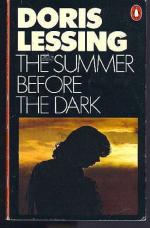|
This section contains 4,928 words (approx. 17 pages at 300 words per page) |

|
SOURCE: Rowland, Susan. “‘Transformed and Translated’: The Colonized Reader of Doris Lessing's Canopus in Argos Space Fiction.” In British Women Writing Fiction, edited by Abby H. P. Werlock, pp. 42-55. Tuscaloosa: University of Alabama Press, 2000.
In the following essay, Rowland contrasts Lessing's early political and artistic conceptions of “representation” with the thematic implications of Canopus in Argos.
Doris Lessing's fiction has always regarded artistic representation as a political act. From the very first novel, The Grass Is Singing (1950), which sets a Mary who failed to bear a redemptive child on the regressive white colonial road until a black Moses leads her to the promised land of death, she has tested the extent to which any particular society can bear to be represented. The “Children of Violence” series (1952-69) interposed a female bildungsroman to contest a colonial and patriarchal culture (Martha Quest [1952], A Proper Marriage [1954]), and used the resources...
|
This section contains 4,928 words (approx. 17 pages at 300 words per page) |

|


